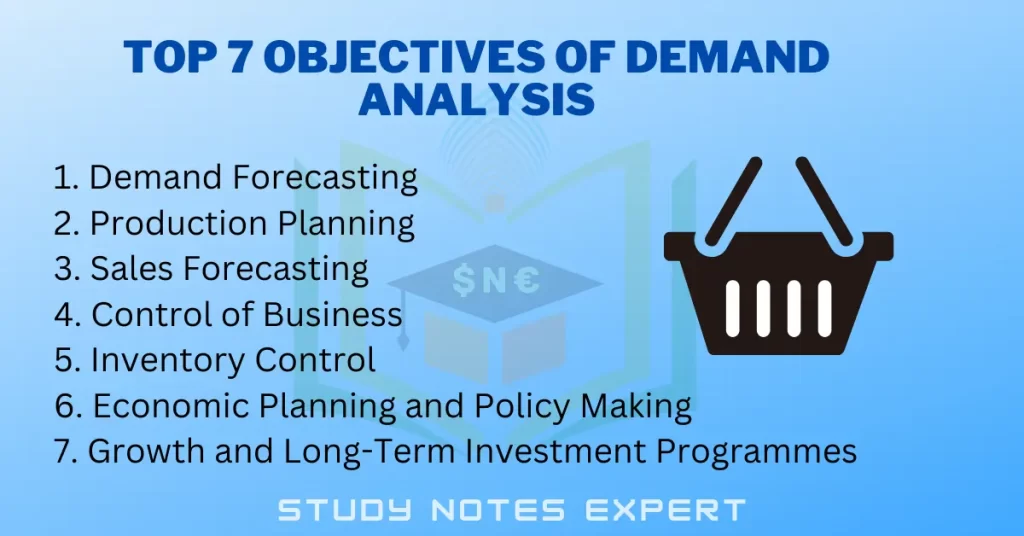Demand plays an important role for the marketer. So, marketers have to know about demand analysis. Here, you will come to know the theory of demand and the objectives of demand analysis.
Meaning and Definition of Demand
The demand refers to a consumer’s willingness for such quantity of goods and services and ability to pay for same at various prices dealing within a period of time. In economics, the theory of demand is something more than a desire to purchase. For example, if any person is feeling hunger but he does not have money to pay for it, in that case, his demand is ineffective. Effective demand involves three things:
- Desire
- Means to purchase
- Willingness to use those means for that purchase
According to Benham, “The demand for anything, at a given price, is the amount of it, which will be bought per unit of time, at that price”.
According to Bobber, “By the theory of demand, we mean the various quantities of a given commodity or service which consumers would buy in one market in a given period of time at various prices”.
Objectives of Demand Analysis
The main objectives of demand analysis are as follows:

1. Demand Forecasting
Demand forecasting is the process of prediction of future demand of any commodity with the help of present and past behavior patterns of some related events.
2. Production Planning
For any business firm demand analysis is the essential criterion that is necessary for production planning. A firm’s output is fully based on such estimation of future demand. In the absence of proper estimation, the firm has to confront with overproduction and subsequent losses.
3. Sales Forecasting
Effective sales forecasting also depends on demand analysis because the advertising function of firm cannot occur without sales forecasting. It is working the main demand function.
4. Control of Business
For making effective control on business, it is required to have a proper budget of costs as well as profit which is based on the assessment of annual demand/sales and prices.
5. Inventory Control
For any business, there must be adequate control of its inventories such as raw materials, intermediate goods, semi-finished products, finished products, spare parts, etc. Such control on future necessities can be done only through demand analysis.
6. Growth and Long-Term Investment Programmes
For a significant growth rate and long-term investment planning program for any firm, demand analysis is quite necessary.
7. Economic Planning and Policy Making
For better planning and lucid allocation of a country’s productional resources, demand analysis helps the economic planners a lot. The long-term demand forecasting and estimation for various goods facilitate the government to establish import and export policies in the country.
What are the 3 Components of Demand?
The three components of demand are quantity demanded, willingness to pay, and market demand. Demand means willingness to pay for the price of the products and prices.
What is the Objective of Law of Demand?
The objective of the law of demand is to understand the relationship between pricing and quantity demanded of a good. It shows the inverse relationship between price and quantity demanded. The law states that when the price of a good rises, the quantity demanded of the good falls, and vice versa.
How do you do Demand Analysis?
There are many ways to do demand analysis, but the most common method is to use market research. This can be done through surveys, focus groups, interviews, and other methods of data collection. Once you have gathered data from your target market, you can then begin to analyze it to see what their needs and wants are. This information can help you to better understand your target market and how to best meet their needs.

